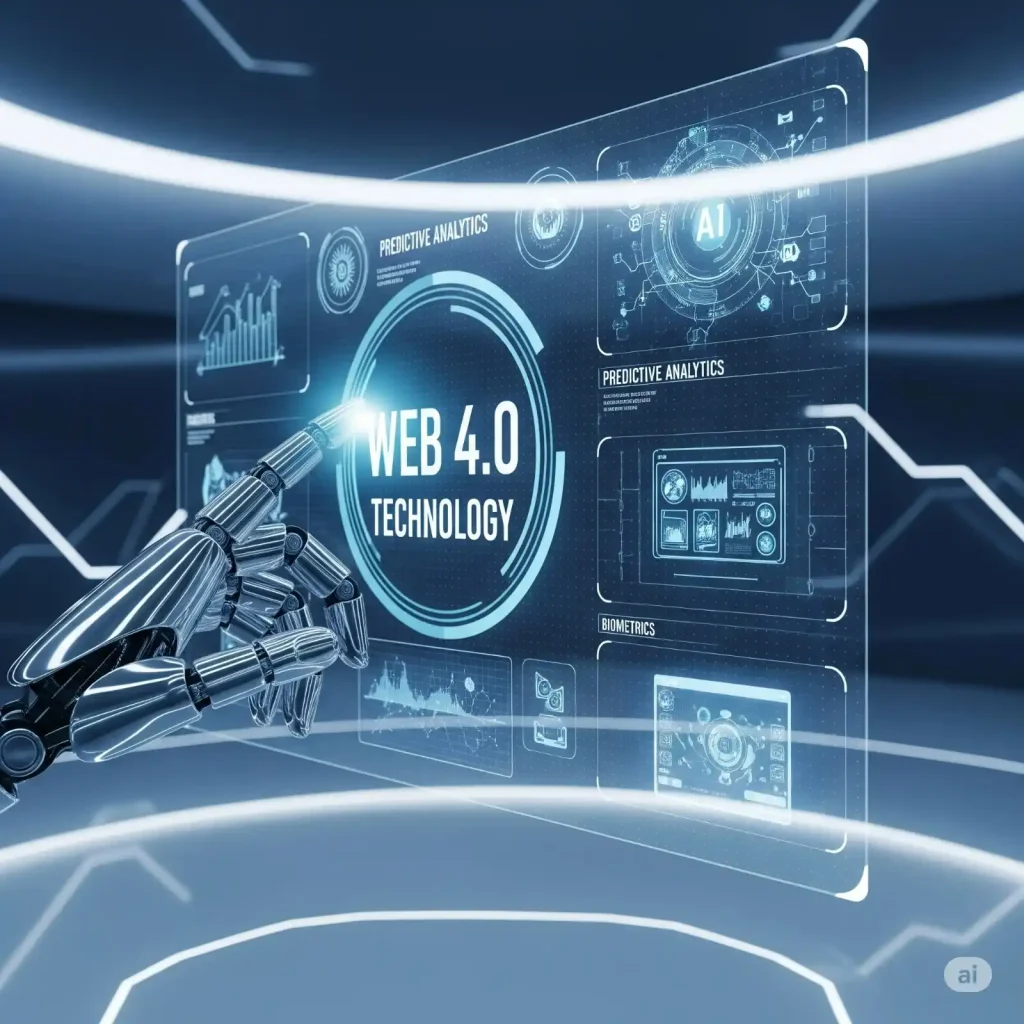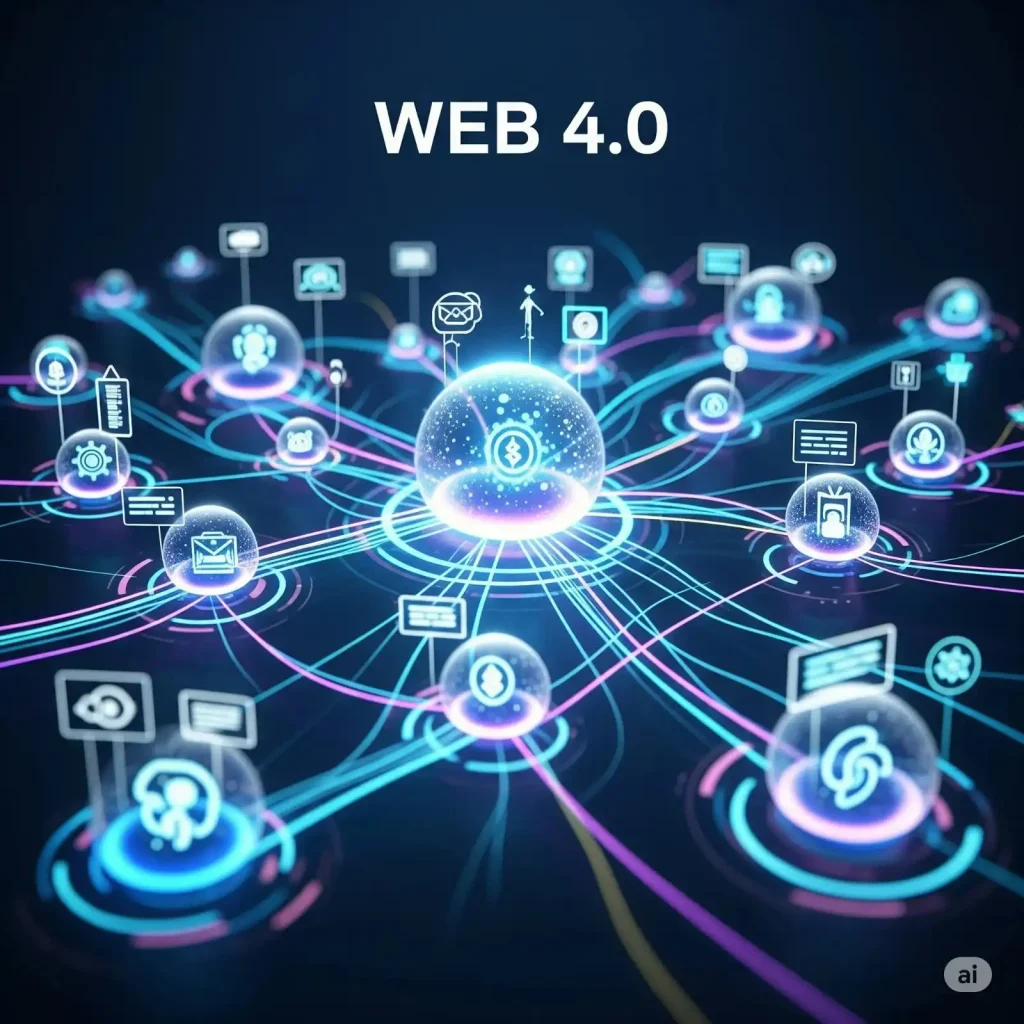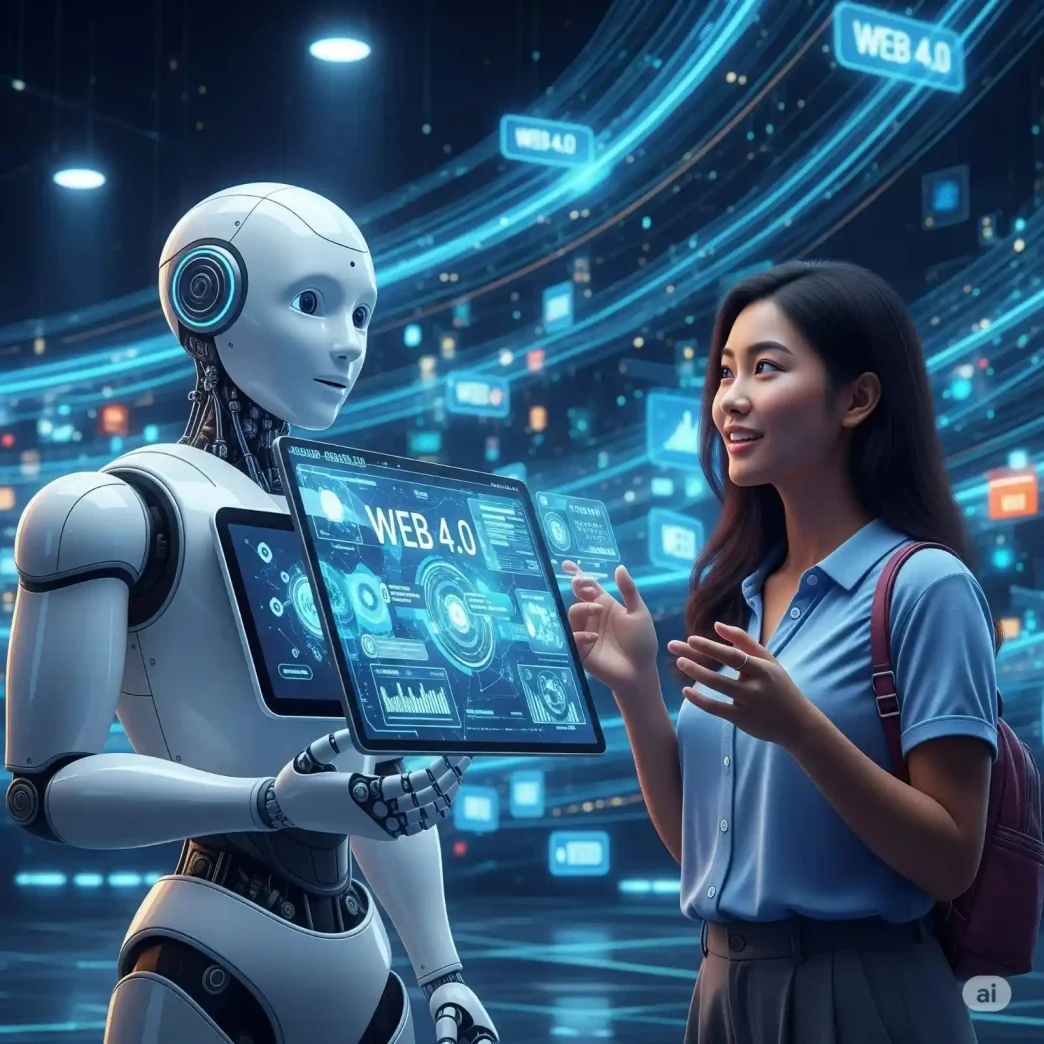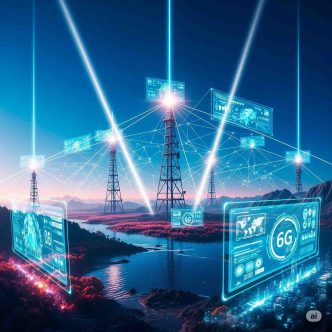Explore what Web 4.0 technology is, how it works, its features, benefits, and how it will change the future of the internet, AI, and human-machine interaction.
Introduction
The internet is evolving fast. From static pages of Web 1.0 to the social era of Web 2.0, and now Web 3.0’s decentralized data — the next phase is here: Web 4.0 technology. Often called the “symbiotic web”, Web 4.0 is designed to provide seamless interaction between humans and machines using AI, IoT, and real-time data.
In this article, we’ll explore what Web 4.0 means, how it works, its key features, and why it’s considered the next revolution of the internet.
Table of Contents
- What is Web 4.0 Technology?
- Web Evolution: From Web 1.0 to 4.0
- Key Features of Web 4.0
- Benefits of Web 4.0 Technology
- Real-World Applications
- Challenges & Concerns
- Conclusion
- FAQs

What is Web 4.0 Technology?
Web 4.0 is the next generation of internet where machines will not only process content but understand and respond to human emotions, context, and behavior. It combines AI, machine learning, blockchain, augmented reality (AR), virtual reality (VR), and edge computing to build an intelligent, personalized digital experience.
Unlike previous versions, Web 4.0 will be self-learning, decentralized, and context-aware, enabling more interactive and predictive platforms.
Web Evolution: From 1.0 to 4.0
| Web Version | Key Feature | Era |
|---|---|---|
| Web 1.0 | Read-only | 1990s |
| Web 2.0 | Social & Interactive | 2000s |
| Web 3.0 | Decentralized, Semantic Web | 2020s |
| Web 4.0 | AI-Driven, Emotional & Predictive | Upcoming (2025+) |
Key Features of Web 4.0
- AI & Machine Learning: Platforms learn and evolve based on user behavior.
- Personalized Experience: Data-driven, predictive content tailored to user preferences.
- Real-time Interaction: Instant communication with AI agents or digital assistants.
- Voice & Emotion Recognition: Web apps will recognize tone, mood, and intent.
- Integration with IoT: Devices communicate and adapt automatically.
- Decentralization: No single authority controls the web.
Benefits of Web 4.0 Technology
- Smarter virtual assistants (like Siri, Alexa) with emotion-sensing capabilities
- Hyper-personalized e-commerce experiences
- Efficient healthcare systems using real-time data
- More intelligent customer support with chatbots
- Safer digital ecosystems using blockchain and AI
Real-World Applications
- Smart Homes: Devices that predict your needs (AC turns on before you arrive).
- Education: AI-based tutoring adapting to student performance.
- Finance: Fraud detection through behavioral AI.
- Healthcare: Remote diagnostics powered by real-time sensors.
- Metaverse & WebAR: Rich, immersive virtual environments integrated with your real-world activity.
Challenges & Concerns
- Privacy Issues: With more data comes the risk of breaches.
- AI Bias: Poor training data can lead to unfair algorithms.
- High Infrastructure Cost: Advanced tech requires expensive upgrades.
- Regulation: There’s still a lack of global standards on data and AI ethics.

Conclusion
Web 4.0 technology is not just an upgrade — it’s a complete transformation of the digital world. It promises a future where machines think, learn, and interact like humans. As we move closer to 2025, businesses and individuals must prepare for a smarter, more connected web that goes beyond information sharing to understanding user intent and emotion. This is the internet — reimagined.
FAQs
Q1. What is the main difference between Web 3.0 and Web 4.0?
Web 3.0 is decentralized and semantic; Web 4.0 adds intelligence, emotion, and AI interaction.
Q2. Is Web 4.0 already in use?
Parts of it, like AI assistants and IoT, are being used. Full-scale Web 4.0 is still emerging.
Q3. Will Web 4.0 replace humans?
No, it’s designed to assist and work symbiotically with humans.
Q4. When will Web 4.0 be fully adopted?
Experts predict Web 4.0 will begin widespread adoption around 2025–2030.
Q5. Is Web 4.0 safe?
It can be — if strong security, ethical AI, and data privacy policies are enforced.
Know more related:
7 Amazing Ways Flying Cars Will Transform India’s Future Travel








